Mounjaro or tirzepatide has shown promise for improving sleep apnoea symptoms for people with obesity. If you have been struggling to get a good night’s sleep because of sleep apnoea, then the latest research on the new weight loss injection, Mounjaro or tirzepatide, could offer a potential solution.
A clinical trial suggests that Mounjaro or tirzepatide, used for diabetes and weight loss, can also potentially be a solution for sleep apnoea. Tirzepatide, initially a diabetes medication, can reduce symptoms of sleep apnoea in people with obesity. With up to 70% of people with obstructive sleep apnoea also struggling with obesity, these findings could make a big difference.
This article will uncover this fascinating research and provide some background behind this blockbuster weight-loss injection, Mounjaro.
You can use the navigation table below to skip to the topics that interest you.
Table of contents
- What is sleep apnoea?
- What Is Obstructive Sleep Apnoea (OSA)?
- How many people have sleep apnoea?
- Obesity and sleep apnoea
- What are the consequences of obstructive sleep apnoea?
- Screening tool for OSA: STOP-Bang
- How is obstructive sleep apnoea treated?
- Weight loss and obstructive sleep apnoea
- What is Mounjaro?
- What are the different strengths of Mounjaro?
- How does Mounjaro cause weight loss?
- Treatment with tirzepatide for obstructive sleep apnoea
- SURMOUNT-OSA trial overview
- SURMOUNT-OSA results
- Implications for using tirzepatide for obstructive sleep apnoea
- Mounjaro online weight loss
-
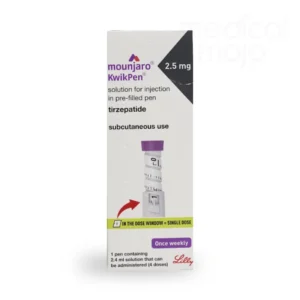 Mounjaro 2.5mg InjectionPrice range: £174.99 through £649.99
Mounjaro 2.5mg InjectionPrice range: £174.99 through £649.99 -
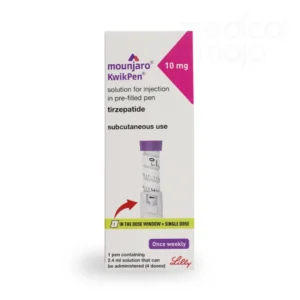 Mounjaro 10mg InjectionPrice range: £323.75 through £1,265.00
Mounjaro 10mg InjectionPrice range: £323.75 through £1,265.00 -
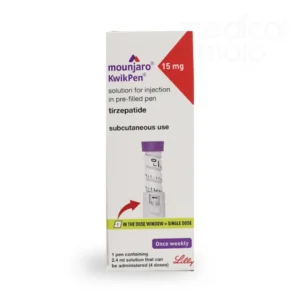 Mounjaro 15mg InjectionPrice range: £422.50 through £1,640.00
Mounjaro 15mg InjectionPrice range: £422.50 through £1,640.00
What is sleep apnoea?
Sleep apnoea is when there are repetitive pauses in breathing during sleep, caused by obstruction of the airways (obstructive sleep apnoea) or altered control of breathing (central sleep apnoea)(Jun, J.C et al., 2016). In this blog, we will focus on obstructive sleep apnoea.
If you want a primer on sleep, check out our blog, “What is sleep?” and if you are looking for better sleep have a read of “Fifteen tips for healthy sleep.”
What Is Obstructive Sleep Apnoea (OSA)?
Obstructive sleep apnoea (OSA) is when the airway becomes partially or completely blocked during sleep (Carberry JC et al., 2016). This happens because the muscles that keep the airway open relax during sleep, causing airflow to decrease or stop. This causes the key symptoms of episodes of loud snoring and disrupted breathing.
The reduction in the airflow can either be:
- Hypopnea: Partial reduction in airflow.
- Apnoea: Complete stop in airflow.
The severity of OSA is measured using the apnoea-hypopnea index (AHI), which counts how many times airflow is reduced or stopped per hour of sleep:
- Normal: AHI < 5 events per hour
- Mild OSA: AHI 5–15 events per hour
- Moderate OSA: AHI 15–30 events per hour
- Severe OSA: AHI > 30 events per hour (Berry RB et al., 2012).
A sleep study is the gold standard for diagnosing obstructive sleep apnoea. This can involve polysomnography (a detailed sleep test), while questionnaires may be used to screen for OSA (see below) or estimate its prevalence in larger groups of people.
How many people have sleep apnoea?
Obstructive sleep apnoea (OSA) has a widespread prevalence; it is thought that around one billion people are affected by it (A.V. Benjafield et al., 2019). OSA is not simply snoring; it is a serious condition that can lead to serious cardiovascular consequences (G. Labarca et al., 2023).
Obesity and sleep apnoea
Obstructive Sleep Apnoea (OSA) and obesity are closely linked, a connection described by Charles Dickens, who noted the association between excess weight and excessive daytime sleepiness. In Charles Dickens’s novel The Pickwick Papers, the character Joe often referred to as the “fat boy,” is depicted as a servant who frequently falls asleep during his duties.
Excess body fat is a significant risk factor for OSA (L. Messineo et al., 2022). For every increase in Body Mass Index (BMI) by one point, the severity of OSA increases by 14%. Similarly, for every 0.1 increase in the waist-to-hip ratio, the likelihood of more severe OSA jumps by 61% (P.V. Tishler et al., 2003). A 10% weight gain raises the risk of developing moderate to severe OSA sixfold, while a 10% weight loss can reduce OSA severity by 26% (P.E. Peppard et al., 2000). It is no surprise that as BMI rises, so does the prevalence of OSA (C.V. Senaratna et al., 2016).
Obstructive sleep apnoea is most commonly seen in people with obesity. It happens when the airways become blocked, often because of fatty tissue around the neck and throat, making breathing harder during sleep. Obesity can worsen this by adding pressure to the airways, leading to frequent breathing interruptions at night.
Although OSA is often associated with individuals who are overweight or obese, the relationship between OSA and obesity is more complex. Despite weight excess being an important pathogenic contributor to obstructive sleep apnoea (OSA), many individuals with obstructive sleep apnoea are not obese (Messineo L. et al., 2024).
What are the consequences of obstructive sleep apnoea?
The most well-known daytime effect of OSA is feeling excessively sleepy during the day (Sharples LD et al., 2016). Additionally, obstructive sleep apnoea reduces quality of life (Jenkinson C et al., 1999), raises the risk of road traffic accidents (Barbé F et al., 1998), and contributes to substantial healthcare and economic costs (Sjösten N et al., 2009). OSA is also associated with an increased risk of cardiovascular disease (Marin JM et al., 2005).
Screening tool for OSA: STOP-Bang
Could you be at risk of Obstructive Sleep Apnoea (OSA)? Answer the questions below to find out. Before starting the questionnaire (Chung F et al., 2008), please calculate your BMI using the BMI Test.
S Do you snore loudly (louder than talking or loud enough to be heard through closed doors)? Y/N
T Do you often feel tired, fatigued, or sleepy during the day? Y/N
O Has anyone noticed you stop breathing while you are asleep? Y/N
P Do you have or are you being treated for high blood pressure? Y/N
B Body Mass Index (BMI) more than 35? Y/N
A Age over 50? Y/N
N Neck circumference greater than 40cm? Y/N
G Gender male? Y/N
If you answered “Yes” to three or more responses, then you have a high risk of obstructive sleep apnoea (OSA).
How is obstructive sleep apnoea treated?
Continuous positive airway pressure (CPAP) is the standard obstructive sleep apnoea (OSA) treatment. It involves using a small bedside machine that connects to a snug face mask. This machine gently blows air to keep your airway open while you sleep, acting like an air splint. CPAP is highly effective in reducing symptoms of obstructive sleep apnoea (Gupta MA et al., 2016) and improving quality of life. Research shows it can reduce sleepiness and boost quality of life even in people with mild symptoms or less severe obstructive sleep apnoea (Craig SE et al., 2012).
Other ways to manage OSA include losing weight, cutting back on alcohol and sedative medications, and using mandibular advancement devices (MAD). Weight loss, in particular, is a proven method to reduce obstructive sleep apnoea symptoms (Schwartz AR et al., 1991). This can be achieved through diet and lifestyle changes or, in some cases, bariatric surgery (Greenburg DL et al., 2009).
Weight loss and obstructive sleep apnoea
Weight loss is an effective method of reducing the severity of the symptoms associated with obstructive sleep apnoea. This has led to exciting work in the SURMOUNT-OSA trial, which looked at how tirzepatide or Mounjaro can help reduce obstructive sleep apnoea symptoms. Before we look at the research in detail, we will review Mounjaro and how it works.
Have questions about Mounjaro?
Get a FREE telephone consultation with one of our pharmacists, who will call you and help you understand what the right options are for you.
Call me about Mounjaro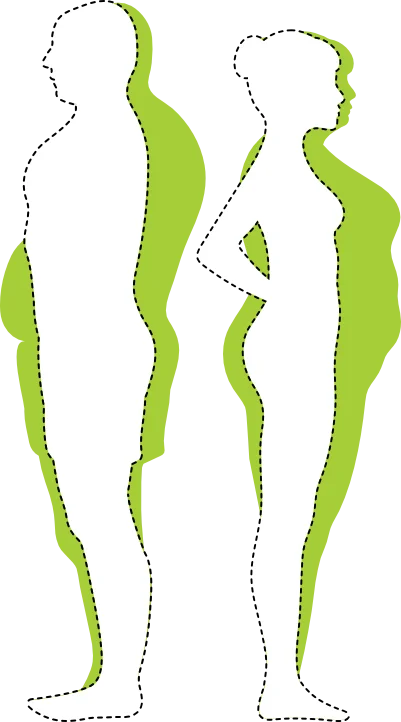
What is Mounjaro?
Mounjaro is the brand name for tirzepatide, a new weekly injection for weight loss. It was approved by the UK’s Medicines and Healthcare Products Regulatory Agency (MHRA) in November 2023. Mounjaro is licensed for adults with obesity (BMI of 30 or higher) or those who are overweight (BMI 27–30) and have weight-related health conditions(MHRA 2023).
To learn more about Mounjaro, you can read our blog, “What is Mounjaro? The Medical Mojo guide to the new weight-loss injection”.
What are the different strengths of Mounjaro?
Mounjaro is available as a pre-filled injection pen containing the following doses of tirzepatide:
It is administered as a weekly injection under the skin of the stomach, thigh, or upper arm.
The treatment starts with Mounjaro 2.5mg once a week for four weeks, followed by an increase to Mounjaro 5mg weekly. As advised by a healthcare provider, at least four-week intervals, further dose adjustmentscan be made up to a maximum of Mounajro 15mg weekly.
This slow increase is designed to reduce the severity of the side effects and get the body used to the drug. In fact, most side effects in the clinical trials occurred during this titration phase, when the body was becoming accustomed to Mounjaro (Jastreboff et al., 2022).
How does Mounjaro cause weight loss?
The active ingredient in Mounjaro, tirzepatide, helps encourage weight by regulating appetite. This leads to a feeling of fullness, reduced hunger, and fewer food cravings (MHRA, 2023).
Mounjaro, or tirzepatide, is the first of a new class of drugs that combines two gut hormones, glucagon-like peptide-1 (GLP-1)and glucose-dependent insulinotropic polypeptide (GIP).
These gut hormones are known as incretins because they “increase” the release of glucose in response to food. Because Mounjaro combines two incretins, GLP-1 and GIP, it is known as a “twincretin.”
The combination of these gut hormones decreases appetite, makes you feel fuller, and delays stomach emptying. When GLP-1 and GIP are combined, they have a stronger effect and cause more weight loss (Coskun T et al., 2018).
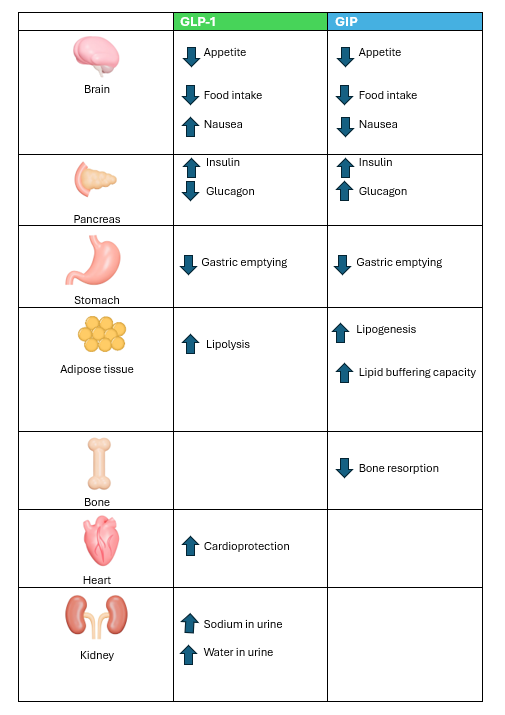
Treatment with tirzepatide for obstructive sleep apnoea
The SURMOUNT-OSA trial, published in The New England Journal of Medicine (Malhotra A. et al., 2024), specifically studied tirzepatide in adults with obesity and moderate-to-severe obstructive sleep apnoea.
SURMOUNT-OSA trial overview
Two phase 3 trials were conducted to test tirzepatide in adults with moderate-to-severe OSA and obesity:
- Trial 1: Included participants not using positive airway pressure (PAP) therapy.
- Trial 2: Included participants already using PAP therapy.
Participants were randomly assigned to receive either tirzepatide (10 or 15 mg) or a placebo for 52 weeks. The main goal was to measure changes in the apnoea–hypopnea index (AHI), which counts breathing disruptions during an hour of sleep.
Other measures included changes in body weight, oxygen levels, inflammation markers, sleep quality, and blood pressure.
Is Mounjaro right for you?
Get a FREE telephone consultation with one of our pharmacists.
Call me about Mounjaro
SURMOUNT-OSA results
The study results showed that tirzepatide (Mounjaro) significantly reduced the severity of obstructive sleep apnoea (OSA) and improved other health measures compared to a placebo:
Starting severity
At the beginning, participants had severe OSA (about 50 events/hour) and a high BMI (around 39, indicating obesity).
Reduction in obstructive sleep apnoea events
After 52 weeks
Overall difference: Tirzepatide showed a dramatic improvement in OSA compared to the placebo, with about 20-24 fewer events per hour (a big reduction in severity).
Other benefits
Tirzepatide led to improvements in all measured areas compared to placebo, including:
- Body weight: Significant reductions.
- Blood oxygen levels: Improved.
- Inflammation marker (hs-CRP): Reduced.
- Systolic blood pressure: Lowered.
- Sleep quality: Improved according to participant feedback.
Side effects
The most common side effects of tirzepatide were gastrointestinal (e.g., nausea, diarrhoea) and were mostly mild to moderate.
Conclusion
Tirzepatide not only reduced breathing disruptions (AHI) in people with obstructive sleep apnoea and obesity but also contributed to weight loss, improved oxygen levels, reduced inflammation, better sleep, and lower blood pressure. These findings support its potential as a treatment for OSA related to obesity.
This suggests that tirzepatide not only helps with weight loss but also significantly improves OSA and related health problems.
Implications for using tirzepatide for obstructive sleep apnoea
These findings suggest that tirzepatide could become an attractive option for obstructive sleep apnoea patients who struggle with traditional treatments like positive airway pressure (PAP) therapy or surgery. By targeting both weight loss and OSA severity, tirzepatide offers a dual benefit, particularly for patients with obesity-driven OSA. Its non-invasive nature and significant efficacy make it a promising alternative to managing OSA, especially for those who cannot tolerate or access standard therapies.
Mounjaro online weight loss
Achieve your weight loss goals with Mounjaro and personalised coaching from Medical Mojo. Studies show that adding coaching to your weight loss journey significantly boosts success (Unick JL, et al., 2024). Our program offers weekly calls, expert advice, and personalised guidance to keep you on track. With Medical Mojo, you’ll get the full range of Mounjaro pens, free needles, and sharps bins, making your weight loss journey simple and seamless.
Are weight loss treatments making you tired, or have they led to a sudden increase in hair loss? Do you struggle with sleep?
Get a free month’s supply of one of our compounded treatments for energy, hair loss or sleep, with your first purchase of Mounjaro or Wegovy from Medical Mojo.
Claim your FREE offer
Note: This information is for educational purposes only and should not substitute for professional medical advice.
References
- Barbé F, Pericás J, Muñoz A, Findley L, Antó JM, Agustí AG. Automobile accidents in patients with sleep apnea syndrome. An epidemiological and mechanistic study. Am J Respir Crit Care Med. 1998;158:18–22.
- A.V. Benjafield, N.T. Ayas, P.R. Eastwood, R. Heinzer, M.S.M. Ip, M.J. Morrell, et al. Estimation of the global prevalence and burden of obstructive sleep apnoea: a literature-based analysis. Lancet Respir Med, 7 (8) (2019 Aug), pp. 687-698.
- Berry RB, Budhiraja R, Gottlieb DJ, Gozal D, Iber C, Kapur VK, et al. Rules for scoring respiratory events in sleep: update of the 2007 AASM Manual for the Scoring of Sleep and Associated Events. Deliberations of the Sleep Apnea Definitions Task Force of the American Academy of Sleep Medicine. J Clin Sleep Med. 2012;8:597–619.
- Carberry JC, Jordan AS, White DP, Wellman A, Eckert DJ. Upper airway collapsibility (Pcrit) and pharyngeal dilator muscle activity are sleep stage dependent. Sleep. 2016;39:511–21.
- Chung F, Yegneswaran B, Liao P, Chung SA, Vairavanathan S, Islam S, Khajehdehi A, Shapiro CM. STOP questionnaire: a tool to screen patients for obstructive sleep apnea. Anesthesiology. 2008 May;108(5):812-21.
- Craig SE, Kohler M, Nicoll D, Bratton DJ, Nunn A, Davies R, et al. Continuous positive airway pressure improves sleepiness but not calculated vascular risk in patients with minimally symptomatic obstructive sleep apnoea: the MOSAIC randomised controlled trial. Thorax. 2012;67:1090–6.
- Greenburg DL, Lettieri CJ, Eliasson AH. Effects of surgical weight loss on measures of obstructive sleep apnea: a meta-analysis. Am J Med. 2009;122:535–42.
- Gupta MA, Simpson FC, Lyons DCA. The effect of treating obstructive sleep apnea with positive airway pressure on depression and other subjective symptoms: A systematic review and meta-analysis. Sleep Med Rev. 2016;28:55–68.
- Jastreboff, A.M., Aronne, L.J., Ahmad, N.N., Wharton, S., Connery, L., Alves, B., Kiyosue, A., Zhang, S., Liu, B., Bunck, M.C. and Stefanski, A., 2022. Tirzepatide once weekly for the treatment of obesity. New England Journal of Medicine, 387(3), pp.205-216.
- Jenkinson C, Davies RJ, Mullins R, Stradling JR. Comparison of therapeutic and subtherapeutic nasal continuous positive airway pressure for obstructive sleep apnoea: a randomised prospective parallel trial. Lancet. 1999;353:2100–5.
- Jun, J.C., Chopra, S. and Schwartz, A.R., 2016. Sleep apnoea. European Respiratory Review, 25(139), pp.12-18.
- G. Labarca, D. Vena, W.H. Hu, N. Esmaeili, L. Gell, H.C. Yang, et al. Sleep apnea physiological burdens and cardiovascular morbidity and mortality. Am J Respir Crit Care Med, 208 (7) (2023 Oct 1), pp. 802-813
- Malhotra, A., Grunstein, R.R., Fietze, I., Weaver, T.E., Redline, S., Azarbarzin, A., Sands, S.A., Schwab, R.J., Dunn, J.P., Chakladar, S. and Bunck, M.C., 2024. Tirzepatide for the Treatment of Obstructive Sleep Apnea and Obesity. New England Journal of Medicine.
- Marin JM, Carrizo SJ, Vicente E, Agusti AGN. Long-term cardiovascular outcomes in men with obstructive sleep apnoea-hypopnoea with or without treatment with continuous positive airway pressure: an observational study. Lancet . 2005;365:1046–53.
- Messineo, L., Bakker, J.P., Cronin, J., Yee, J. and White, D.P., 2024. Obstructive sleep apnea and obesity: A review of epidemiology, pathophysiology and the effect of weight-loss treatments. Sleep Medicine Reviews, 78, p.101996.
- L. Messineo, D.J. Eckert. Obstructive sleep apnea phenotyping to understand pathophysiology and improve treatment and outcomes. Encyclopedia of respiratory medicine (second ed.:), Elsevier (2022), pp. 22-33
- MHRA, 2023. MHRA authorises diabetes drug Mounjaro (tirzepatide) for weight management and weight loss. GOV.UK. Available at: https://www.gov.uk/government/news/mhra-authorises-diabetes-drug-mounjaro-tirzepatide-for-weight-management-and-weight-loss
- P.E. Peppard, T. Young, M. Palta, J. Dempsey, J. Skatrud. Longitudinal study of moderate weight change and sleep-disordered breathing. JAMA, 284 (23) (2000 Dec 20), pp. 3015-3021
- Schwartz AR, Gold AR, Schubert N, Stryzak A, Wise RA, Permutt S, et al. Effect of weight loss on upper airway collapsibility in obstructive sleep apnea. Am Rev Respir Dis. 1991;144:494–8.
- C.V. Senaratna, D.R. English, D. Currier, J.L. Perret, A. Lowe, C. Lodge, et al. Sleep apnoea in Australian men: disease burden, co-morbidities, and correlates from the Australian longitudinal study on male health. BMC Publ Health, 16 (Suppl 3) (2016 Oct 31), p. 1029
- Sharples LD, Clutterbuck-James AL, Glover MJ, Bennett MS, Chadwick R, Pittman MA, et al. Meta-analysis of randomised controlled trials of oral mandibular advancement devices and continuous positive airway pressure for obstructive sleep apnoea-hypopnoea. Sleep Med Rev. 2016;27:108–24.
- Sjösten N, Kivimäki M, Oksanen T, Salo P, Saaresranta T, Virtanen M, et al. Obstructive sleep apnoea syndrome as a predictor of work disability. Respir Med. 2009;103:1047–55.
- P.V. Tishler, E.K. Larkin, M.D. Schluchter, S. Redline. Incidence of sleep-disordered breathing in an urban adult population: the relative importance of risk factors in the development of sleep-disordered breathing. JAMA, 289 (17) (2003 May 7), pp. 2230-2237


